Lamentations for "The Final Frontier"
Reading Aloud John Michael Greer's 'An Elegy for the Age of Space'
The Last Rocket Launch: Humanity’s Final Journey- A lone rocket launching into the cold, dark sky from an overgrown, crumbling spaceport. The launchpad is surrounded by rusted fences, abandoned vehicles, and buildings overtaken by nature, suggesting that this is humanity’s last attempt at space exploration. The rocket’s engines roar as it ascends, leaving a bright, fiery trail against the twilight sky, but the surrounding environment reflects decay and decline. People stand at a distance, watching with a mix of awe and sadness, understanding that this could be the final chapter of humanity’s journey into the cosmos. The scene embodies both the grandeur of space exploration and the poignant realization that the era of interstellar ambition is coming to a close.
Written over a decade ago, 'An Elegy For The Age Of Space (2011)' remains as pertinent today as it was then, perhaps even more so as we witness the end of Western Civilization ‘as we know it’ alongside Industrial Society & its various fruits.
Faustian Man, who Oswald Spengler characterized as ‘seeking to direct the world according to his will,’ has come across not just the Limits to Growth but also the ecological, geoeconomic & ideocultural limits to exercising his Hegemony over others.
Once Upon A Time, the idea of domed cities on the moon, summer vacations to Mars, & other related dreams and fantasies sparked a sense of wonder and excitement.
In the aftermath of the Two Devastating World Wars of the 20th century, Faustian Man yearned for the infinitude of the boundless cosmos…
Yet, as the Grandmaster correctly notes in his elegy, that time has now passed. The Dream is long dead, & Reality is setting in for many people that what awaits Mankind is not a ‘March out of the Caves & Into The Stars’ but rather an Earthbound destiny.
This reality, with its weight & certainty, is now firmly established and inescapable, best exemplified by the Grandmaster’s seemingly innocent expression: ‘Here We Are! 😊’
The collective Emotional breakdown of such a realization has yet to reach many, but soon it will, accompanied by feelings of Terror, Dread, Grief, Anxiety, etc.
While His Eminence John Michael Greer does not write on SubStack, one can find his writings elsewhere on Cyberspace:
Ecosophia.net (Official Blog)
( If you have not done so already, Please Subscribe to the Grandmaster on Ecosophia.net, Dear Readers & Listeners! His work is a must-read for DOOM-ers of all shapes & sizes & Young, aspiring DOOM Merchants like Yours Truly! 😘 )
Without further adieu, here is the entire essay in all its DOOM-ful splendour! 😉
An Elegy For The Age Of Space
Originally Published By The Archdruid Report;
Now Hosted at Resilience.org: Full Essay
August 24, 2011
A Decrepit Space Museum on Earth- An abandoned space museum, its halls once filled with the artifacts of space exploration--spacesuits, rocket engines, and scale models of the Apollo and Soyuz missions. Now, the museum is shrouded in darkness, with dust-covered exhibits and broken display cases. Sunlight filters through cracked windows, illuminating faded posters of astronauts and missions to Mars. A single, rusty rocket model stands tall in the center, towering over the empty room, casting a long shadow. Graffiti on the walls reads, ‘We once dreamed of the stars.’ The atmosphere is one of profound loss and nostalgia, symbolizing the end of humanity’s dreams of space, preserved only in forgotten relics and memories.
The orbiters are silent now, waiting for the last awkward journey that will take them to the museums that will warehouse the grandest of our civilization’s failed dreams. There will be no countdown, no pillar of flame to punch them through the atmosphere and send them whipping around the planet at orbital speeds. All of that is over.
In Houston, the same silence creeps through rooms where technicians once huddled over computer screens as voices from space crackled over loudspeakers. The screens are black now, the mission control rooms empty, and most of the staff have already gotten their pink slips. On the Florida coast, where rusting gantries creak in the wind and bats flutter in cavernous buildings raised for the sake of a very different kind of flight, another set of lauch pads sinks slowly into their new career as postindustrial ruins.
There are still rockets lifting off elsewhere, to be sure, adding to the globe’s collection of satellites and orbiting space junk. The International Space Station still wheels through the sky, visited at intervals by elderly Soyuz capsules, counting down the days and the missions until its scheduled deorbiting in 2016. In America, a few big corporations have manned space projects on the drawing boards, angling for whatever federal funding survives the next few rounds of our national bankruptcy proceedings, and a few billionaires here and elsewhere are building hobby spacecraft in roughly the same spirit that inspired their Gilded Age equivalents to maintain luxury yachts and thoroughbred stables.
Still, something has shifted. A tide that was expected to flow for generations and centuries to come has peaked and begun to ebb. There will still be rockets surging up from their launch pads for years or decades to come, and some few of them will have human beings on board, but the momentum is gone. It’s time to start coming to terms with the winding down of the age of space.
Ironically, one of the best pieces of evidence for that was the shrill reception given to an article in The Economist announcing The End of the Space Age. The irony was particularly delicious in that The Economist is a British periodical, and Britain has already been through its own retreat from space. During the first half of the 20th century, the British Interplanetary Society was among the most prestigious groups calling for manned space missions, but dreams of a British presence in space collapsed around the same time as Britain’s empire and industrial economy did. It’s hard to miss the schadenfreude in The Economist’s editorial stance, but it was even harder to overlook the bluster and denial splashed across the blogosphere in its wake.
A little perspective might be useful here. When the space shuttle first came off the drawing boards, the much-repeated theory was that it would be the first of a new breed of spacecraft that would make a flight from Cape Canaveral to orbit as commonplace as a flight from New York to Chicago. The next generation would swap out the shuttle’s disposable fuel tank and solid-fuel boosters for a fully reusable first stage that would take a shuttle-equivalent most of the way into orbit, then come back to Earth under its own power and get refueled for the next launch. Further down the road, but already in the concept phase, were spaceplanes that could take off from an ordinary runway, use standard jet engines to get to 50,000 feet or so, where rocket engines would cut in for the leap to orbit. Single-use rockets? In the minds of the space-savvy, they were already as outdated as Model T Fords.
Yet here we are in 2011, the space shuttle program is over, the replacements weren’t built, and for the five years of scheduled life the International Space Station has left, its crews will be getting there via the 1960s-era technology of Soyuz space capsules atop single-use rockets. As for the rest of the steps toward space everyone in the 1960s assumed we would have taken by now—the permanent space stations, the base on the Moon, the manned missions to Mars, and the rest of it—only the most hardcore space fans talk about them any more, and let’s not even discuss their chances of getting significant funding this side of the twelfth of never.
Mind you, I’m not cheering. Though I realized some years ago that humanity isn’t going to the stars—not now, not in the lifetime of our species—the end of the shuttle program with no replacement in sight still hit me like a body blow. It’s not just a generational thing, though it’s partly that; another large part of it was growing up where and when I did. By that I don’t just mean in the United States in the middle decades of the last century, but specifically in the triumphant years between John Glenn’s first orbital flight and Neil Armstrong’s final step onto lunar soil, in a suburb south of Seattle where every third family or so had a father who worked in the aerospace industry. Yes, I remember exactly where I was sitting and what was happening the moment that Walter Cronkite told the world that Apollo 11 had just landed on the Moon.
You didn’t grow up as a geeky, intellectual kid in that sort of setting without falling in love with space. Of course it didn’t hurt that the media was filled to the bursting point with space travel—turn on the tube any evening during my childhood, and if you didn’t get Lost In Space or Star Trek you’d probably catch The Invaders or My Favorite Martian—and children’s books were no different; among my favorites early on was Ronnie Rocket and Suzie Saucer, and I went from there to The Wonderful Flight to the Mushroom Planet, The Spaceship Under the Apple Tree—well, you get the picture. (I won’t even get into science fiction here; that’s a subject that deserves an entire post to itself.) Toys? The G.I. Joe accessory I treasured most in those days was a plastic Mercury space capsule with space suit to match; I also played with Major Matt Mason, Man In Space, and plenty of less efficiently marketed toys as well.
Sunken Ruins of a Spaceport Overtaken by Nature- An old, abandoned spaceport overtaken by lush greenery and vines. Once a hub of activity and technological advancement, the launch pads are now cracked and covered in moss, with weeds growing between the concrete slabs. Rusted rocket boosters and empty fuel tanks lie scattered across the grounds, half-buried in the earth. Birds nest in the skeletal remains of a spacecraft, and wildflowers bloom where engineers once walked. In the distance, an overgrown control tower stands as a lonely monument to humanity’s lost age of exploration. The scene captures the peaceful reclaiming of nature, a gentle reminder that the world moves on, even as the dreams of space travel fade into history.
The future that most people imagined in those days had plenty of options primed to catch a young boy’s imagination, to be sure. Sealab—does anybody remember Sealab these days?—was the Navy’s attempt to compete with the romance of space, complete with breathless National Geographic articles about “a new world of limitless resources beneath the sea.” (Ahem.) For a while, I followed Sealab as passionately as I did the space program, and yes, my G.I. Joe also had a wetsuit and scuba gear. That was common enough, and so were my less scientific fixations of the time, the monster lore and paranormal phenomena and the like; when you’re stuck growing up in suburbia in a disintegrating family and the only source of hope you can come up with is the prospect that the world isn’t as tepidly one-dimensional as everyone around you insists it has to be, you take encouragement where you find it.
You might think that a kid who was an expert on werewolf trivia at age ten would have gone in for the wildest of space fantasies, but I didn’t. Star Trek always seemed hokey to me. (I figured out early on that Star Trek was a transparent pastiche of mid-1960s US foreign policy, with the Klingons as Russia, the Vulcans as Japan, the Romulans as Red China, and Captain Kirk as a wish-fulfillment fantasy version of Gen. William Westmoreland who always successfully pacified his extraterrestrial Vietnams.) Quite the contrary; my favorite spacecraft model kit, which hung from a length of thread in my bedroom for years, was called the Pilgrim Observer: some bright kit designer’s vision of one of the workhorse craft of solar system exploration in the late 20th century.
Dilithium crystals, warp drives, and similar improbabilities had no place in the Pilgrim Observer. Instead, it had big tanks for hydrogen fuel, a heavily shielded nuclear engine on a long boom aft, an engagingly clunky command module up front bristling with telescopes and dish antennas—well, here again, you get the picture; if you know your way around 1970s space nonfiction, you know the kit. It came with a little booklet outlining the Pilgrim I’s initial flyby missions to Mars and Venus, all of it entirely plausible by the standards the time. That was what delighted me. Transporter beams and faster-than-light starflight, those were fantasy, but I expected to watch something not too far from Pilgrim I lifting off from Cape Canaveral within my lifetime.
That didn’t happen, and it’s not going to happen. That was a difficult realization for me to reach, back in the day, and it’s one a great many Americans are doing their level best to avoid right now. There are two solid reasons why the future in space so many of us thought we were going to get never arrived, and each one provides its own reasons for evasion. We’ve talked about both of them in this blog at various times, and there’s more than the obvious reason to review them now.
The first, simply put, is that the United States has lost the space race. Now of course it was less a single race than a whole track and field competition, with the first event, the satellite shot-put contest (winner: Russia, with Sputnik I), followed by the single-orbit dash (winner: Russia, with Vostok I) and a variety of longer sprints (winner: much more often than not, Russia). The run to the Moon was the first real US gold medal—we did half a dozen victory laps back out there just to celebrate—and we also scored big in the planetary probe toss competition, with a series of successful Mariner and Voyager missions that mostly showed us just how stunningly inhospitable the rest of the solar system was. The race that ultimately counted, though, was the marathon, and Russia’s won that one hands down; they’re still in space, and we aren’t.
Behind that unwelcome news is the great geopolitical fact of the early 21st century, the decline and imminent fall of the American empire. Like any number of empires before us, we’ve gotten ourselves wedged tightly into the predictable downside of hegemony—the stage at which the costs of maintaining the economic imbalances that channel wealth from empire to imperial state outstrip the flow of wealth those imbalances are meant to produce. Once that stage arrives, the replacement of the failing empire by some new distribution of power is a foregone conclusion; the only question is how long the process will take and how brutal the final cost to the imperial state will turn out to be.
The Cold War competition between the United States and the Soviet Union was a standard contest to see which empire would outlast the other. The irony, and it’s a rich one, is that the loser of that contest was pretty much guaranteed to be the winner in a broader sense. When the Soviet Union collapsed, Russia had an empire wrenched out of its hands, and as a result it was forced to give up the struggle to sustain the unsustainable. The United States kept its empire intact, and as a result it has continued that futile but obsessive fight, stripping its national economy to the bare walls in order to prop up a global military presence that will sooner or later bankrupt it completely. That’s why Russia still has a functioning space program, while the United States may have trouble finding the money to launch cheap fireworks by the time its empire finally slips from its fingers.
A dusty, dimly lit museum hall filled with relics of the Space Age- Spacesuits hanging lifelessly, a section of a space station module, and models of historic rockets. The displays are covered in a layer of dust, with cobwebs forming in the corners. Broken display screens flicker with static, and faded posters of famous astronauts and missions adorn the walls, their colors washed out by time. In the center of the room, an old, worn plaque reads, ‘The Age of Space Exploration: 1960-2075.’ A few dim lights struggle to illuminate the exhibits, as if echoing the fading memories of humanity’s once-bold adventures beyond Earth. The scene captures a sense of nostalgia and melancholy, as the dreams of exploring the stars are preserved only in relics, long forgotten by the world.
It’s our decidedly mixed luck, as discussed here more than once in the past, that America is entering on the downslope of its imperial decline just as a much vaster curve has peaked and begun to arc in the same direction. That’s the second reason that the space age is ending, not just for us but for humanity. In the final analysis, space travel was simply the furthest and most characteristic offshoot of industrial civilization, and depended—as all of industrial civilization depends—on vast quantities of cheap, highly concentrated, readily accessible energy. That basic condition is coming to an end around us right now. Petroleum has already reached its global production peak as depletion rates shoot past the rate at which new fields can be found and brought on line; natural gas and coal are not far behind—the current bubble in shale gas will be over in five or, just possibly, ten years—and despite decades of animated handwaving, no other energy source has proven to yield anything close to the same abundance and concentration of energy at anything like the same cost.
That means, as I’ve shown in detail in past posts here, that industrial civilization will be a short-lived and self-terminating phenomenon. It doesn’t mean, or at least doesn’t have to mean, that future civilizations will have to make do with an equivalent of the much simpler technological suites that civilizations used before the industrial age; I’ve argued at some length here and elsewhere that an ecotechnic society—a civilization that supports a relatively advanced technology on a modest scale using the diffuse and limited energy provided by sustainable sources, without wrecking the planet—is a live option, if not in the immediate future, then after the dark age the misguided choices of the recent past have prepared for us.
Still, of the thousands of potential technological projects that might appeal to the limited ambitions and even more strictly limited resources of some future ecotechnic society, space travel will rank very, very low. It’s possible that the thing will be done, perhaps in the same spirit that motivated China a little while back to carry out a couple of crisp, technically capable manned orbital flights; ten thousand years from now, putting a human being into orbit will still probably be the most unanswerable way for a civilization to announce that it’s arrived. There are also useful things to be gained by lofting satellites for communication and observation purposes, and it’s not at all impossible that now and then, over the centuries and millennia to come, the occasional satellite will pop up into orbit for a while, and more space junk will be added to the collection already in place.
That’s not the vision that fired a generation with enthusiasm for space, though. It’s not the dream that made Konstantin Tsiolkovsky envision Earth as humanity’s cradle, that set Robert Goddard launching rockets in a Massachusetts farmyard and hurled Yuri Gagarin into orbit aboard Vostok I. Of all people, it was historical theorist Oswald Spengler who characterized that dream most precisely, anatomizing the central metaphor of what he called Faustian civilization—yes, that’s us—as an eternal outward surge into an emptiness without limit. That was never a uniquely American vision, of course, though American culture fixated on it in predictable ways; a nation that grew up on the edge of vastness and cherished dreams of heading west and starting life over again was guaranteed to think of space, in the words of the Star Trek cliché, as “the final frontier.” That it did indeed turn out to be our final frontier, the one from which we fell back at last in disarray and frustration, simply adds a mordant note to the tale.
It’s crucial to realize that the fact that a dream is entrancing and appeals to our core cultural prejudices is no guarantee that it will come true, or even that it can. There will no doubt be any number of attempts during the twilight years of American empire to convince Americans to fling some part of the energies and resources that remain to them into a misguided attempt to relive the dream and claim some supposed destiny among the stars. That’s not a useful choice at this stage of the game. Especially but not only in America, any response to the crisis of our time that doesn’t start by using much less in the way of energy and resources simply isn’t serious. The only viable way ahead for now, and for lifetimes to come, involves learning to live well within our ecological limits; it might also help if we were to get it through our heads that the Earth is not humanity’s cradle, or even its home, but rather the whole of which each of us, and our species, is an inextricable part.
That being said, it is far from inappropriate to honor the failed dream that will shortly be gathering dust in museums and rusting in the winds that blow over Cape Canaveral. Every civilization has some sprawling vision of the future that’s destined never to be fulfilled, and the dream of infinite expansion into space was ours. The fact that it didn’t happen, and arguably never could have happened, takes nothing away from the grandeur of its conception, the passion, genius, and hard work that went into its pursuit, or the sacrifices made on its behalf. Some future poet or composer, perhaps, will someday gather it all up in the language of verse or music, and offer a fitting elegy to the age of space.
Meanwhile, some 240,000 miles from the room where I write this, a spidery metallic shape lightly sprinkled with meteoritic dust sits alone in the lunar night on the airless sweep of Mare Tranquillitatis. On it is a plaque which reads WE CAME IN PEACE FOR ALL MANKIND. Even if no other human eyes ever read that plaque again, as seems likely, it’s a proud thing to have been able to say, and a proud thing to have done. I can only hope that the remembrance that our species once managed the thing offers some consolation during the bitter years ahead of us.
Abandoned Artifacts Buried in Lunar Dust- The remnants of the Apollo moon landing site under a thin blanket of lunar dust, accumulated over years of micrometeoroid bombardment. The lunar module’s descent stage, once shiny and new, is now dull and partially buried, barely recognizable. The flagpole leans at an awkward angle, and the plaque that once read ‘We Came in Peace for All Mankind’ is eroded, its message nearly illegible. The landscape appears untouched and desolate, with no signs of recent activity, as if humanity’s presence here was just a fleeting moment in the Moon’s ancient history. The image captures a haunting sense of abandonment, as the artifacts of exploration slowly disappear into the lunar dust, blending back into the untouched wilderness of the Moon.
The night is come, but not too soon; And sinking silently, All silently, the little moon Drops down behind the sky. There is no light in earth or heaven But the cold light of stars; And the first watch of night is given To the red planet Mars. Is it the tender star of love? The star of love and dreams? O no! from that blue tent above, A hero's armor gleams. And earnest thoughts within me rise, When I behold afar, Suspended in the evening skies, The shield of that red star. O star of strength! I see thee stand And smile upon my pain; Thou beckonest with thy mailèd hand, And I am strong again. Within my breast there is no light But the cold light of stars; I give the first watch of the night To the red planet Mars. The star of the unconquered will, He rises in my breast, Serene, and resolute, and still, And calm, and self-possessed. And thou, too, whosoe'er thou art, That readest this brief psalm, As one by one thy hopes depart, Be resolute and calm. O fear not in a world like this, And thou shalt know erelong, Know how sublime a thing it is To suffer and be strong.
~ Henry Wadsworth Longfellow; The Light Of Stars (1838), Full Poem
Your Support is vital for Smelting the DOOM & keeping it HOT & FRESH off the Furnace!
If you enjoyed the read, I would greatly appreciate it if you subscribed to a Monthly or Yearly pledge to support my work so that I may continue Smelting DOOM for your displeasure!
Alternatively, you can tip here:
Thank You, Dear Readers, for all your Support!



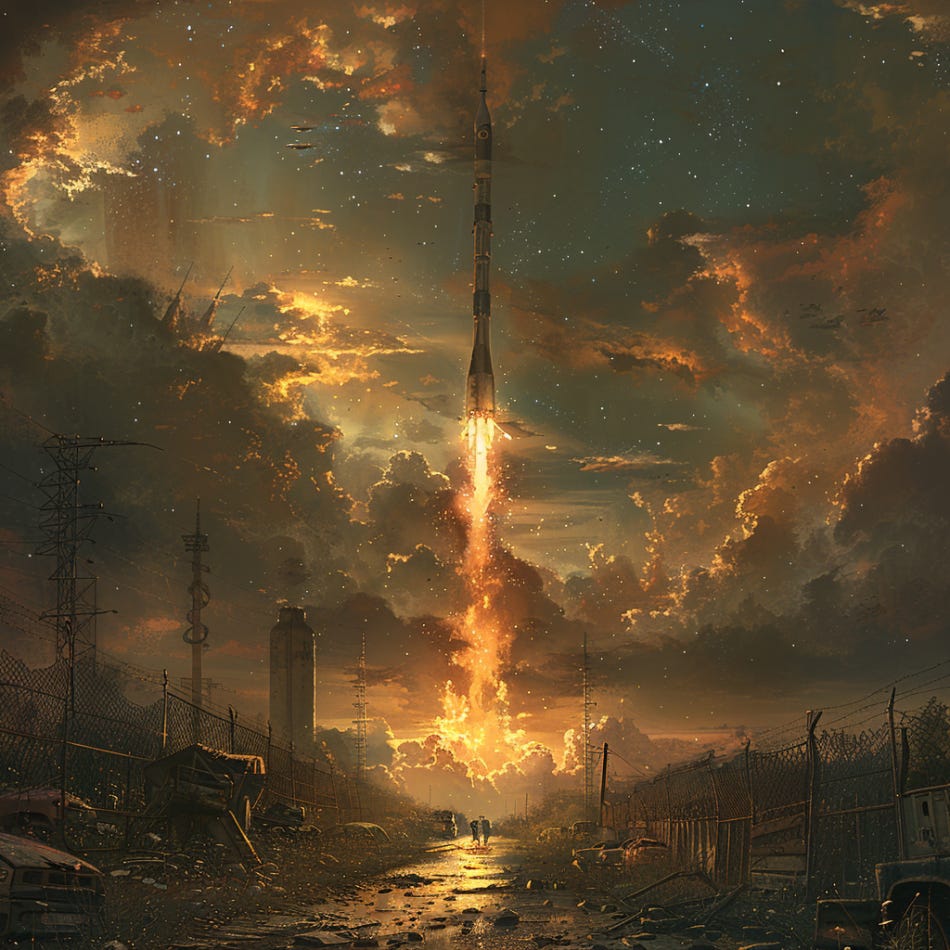
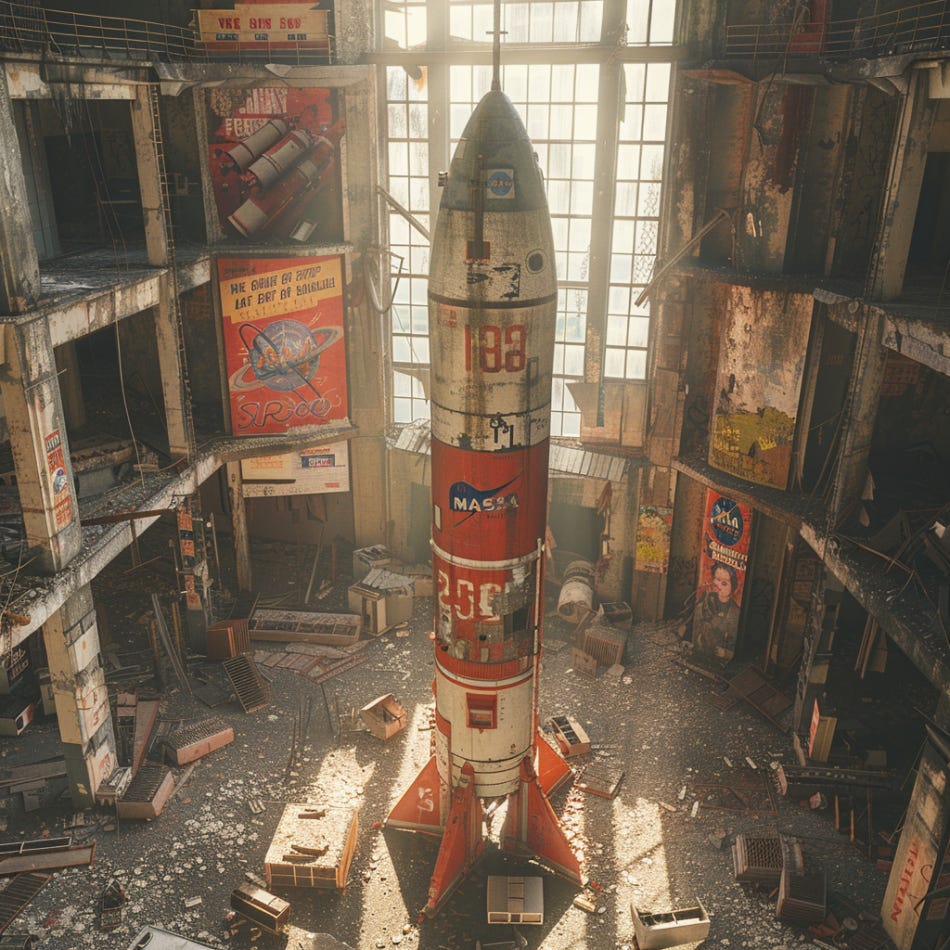

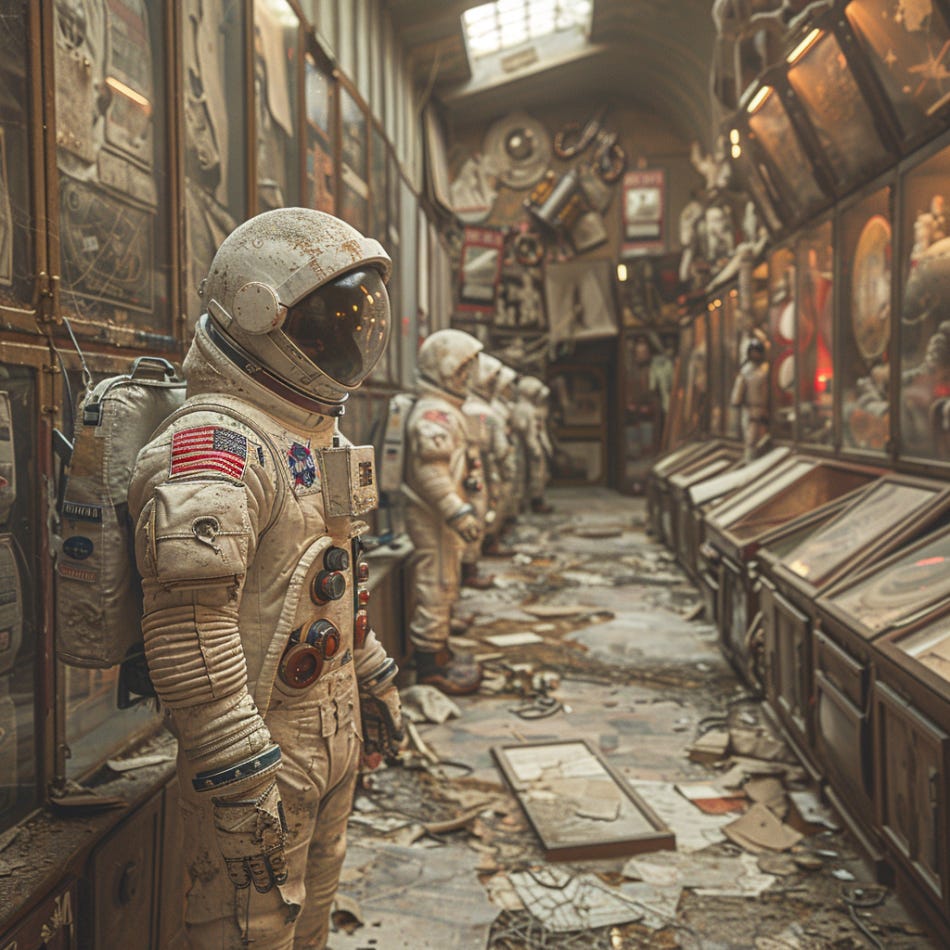
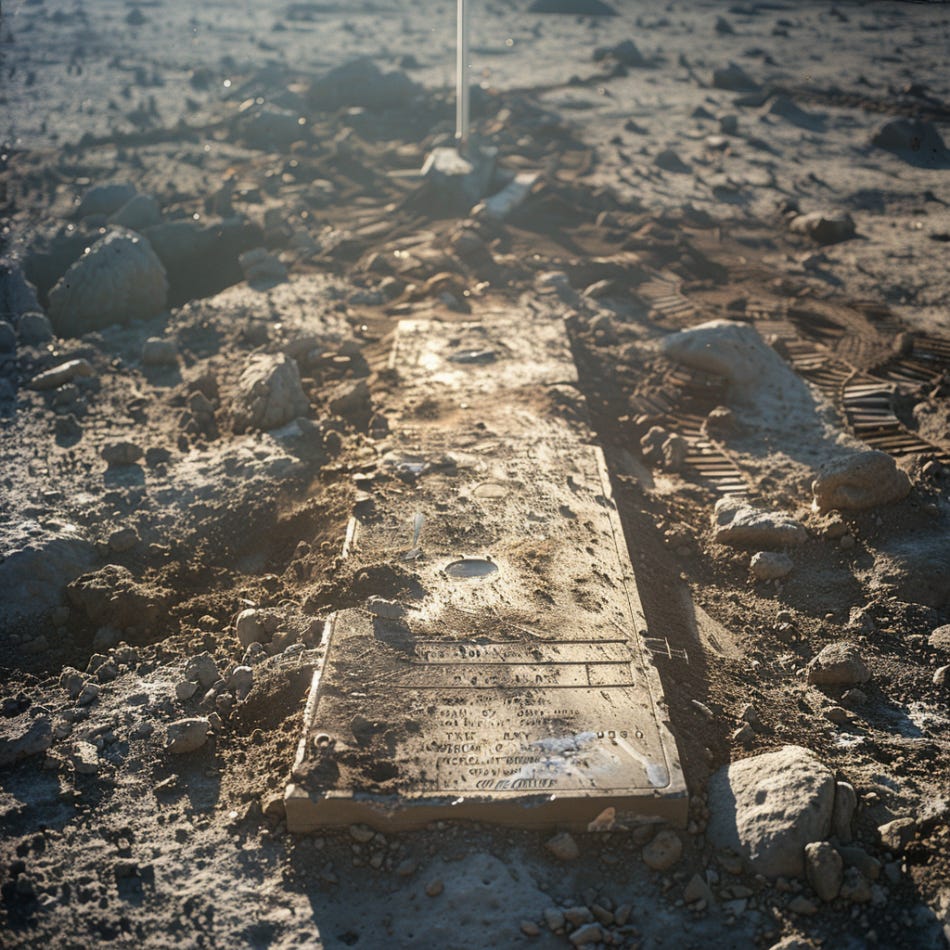
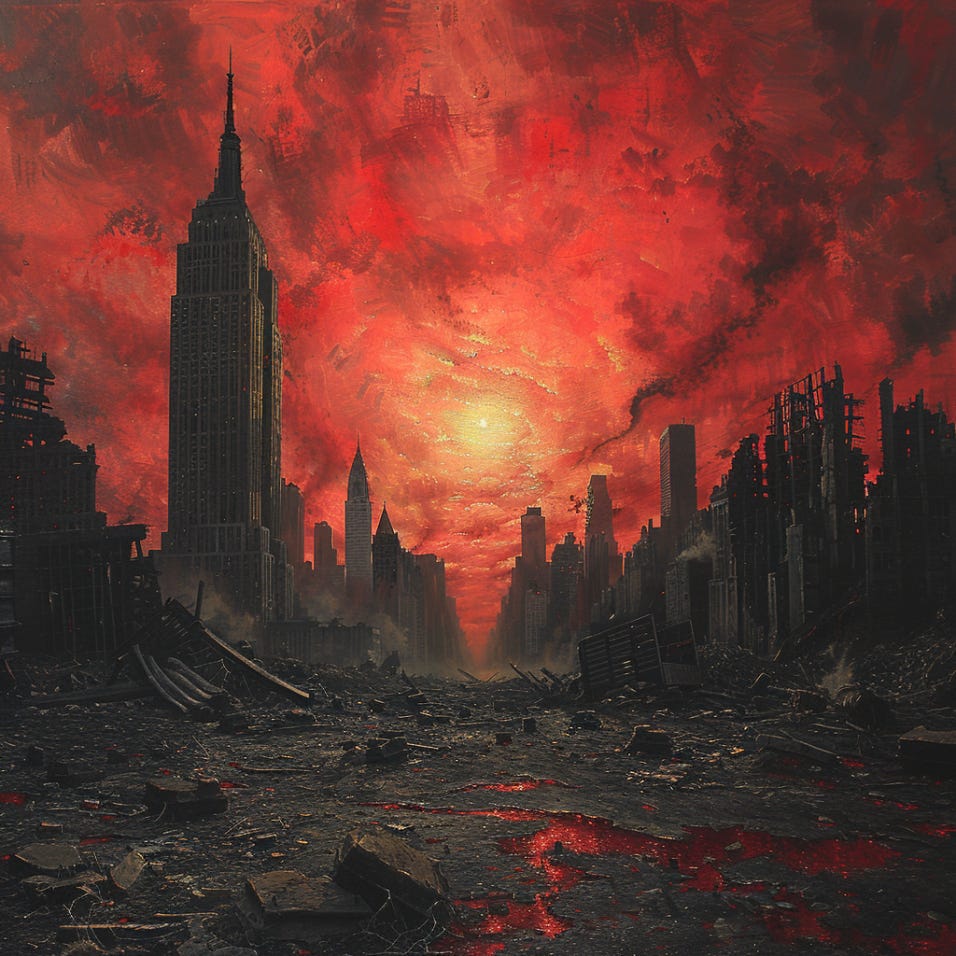

This is a wonderful thought provoking piece
Thank you!
The only thing I disagree with is the artefacts being left as a monument of humanity’s achievement
I think, like the statues from times past, they will be destroyed in the name of social justice of some variety so as not to remind cultures that could not excel that equality is a lie